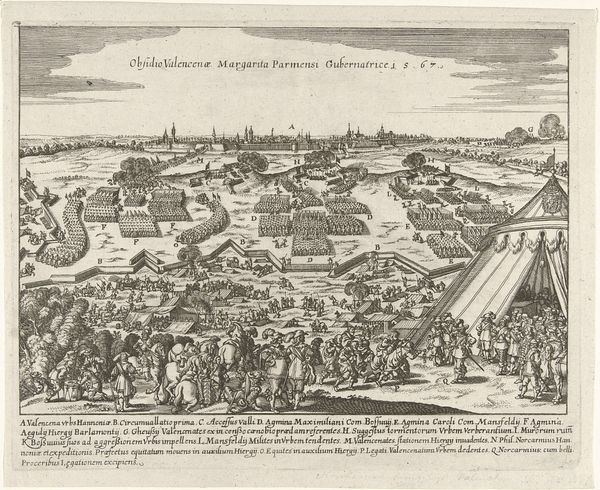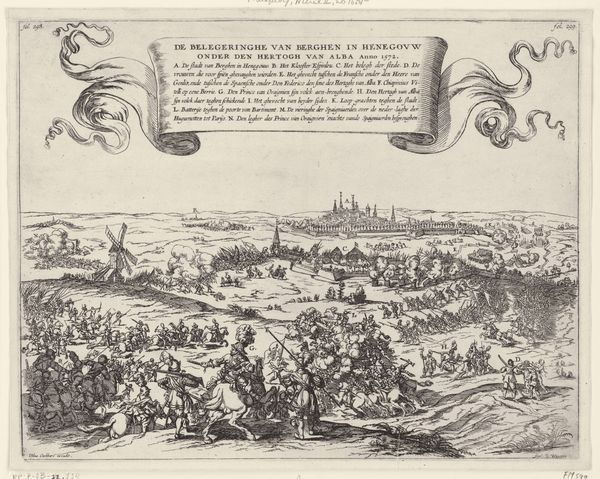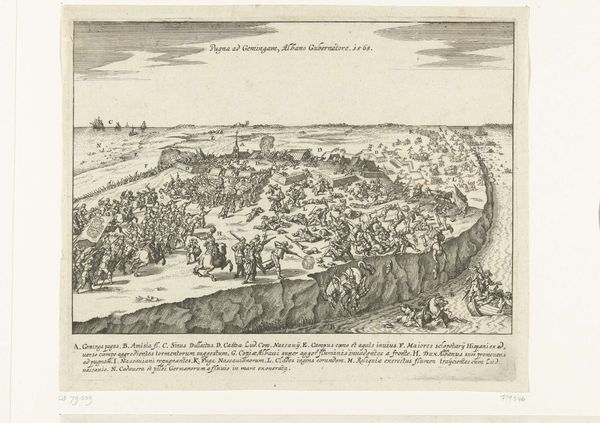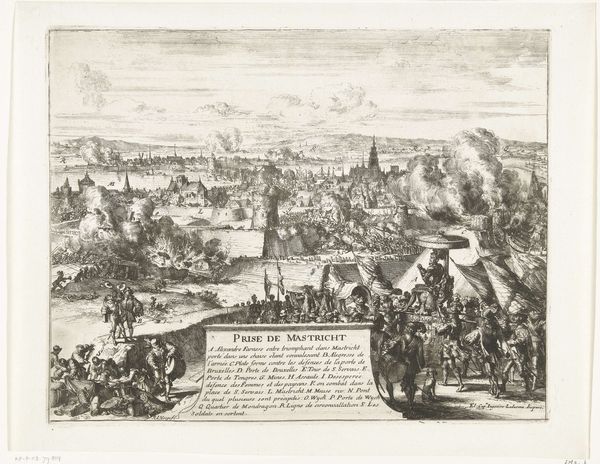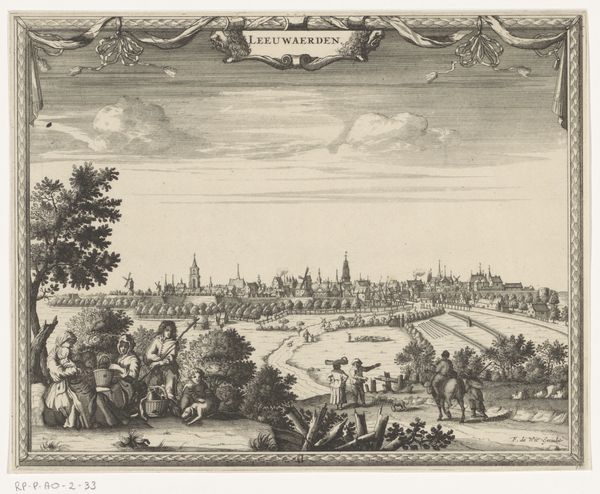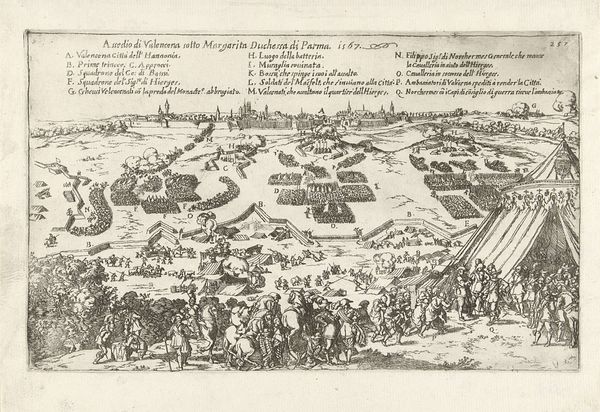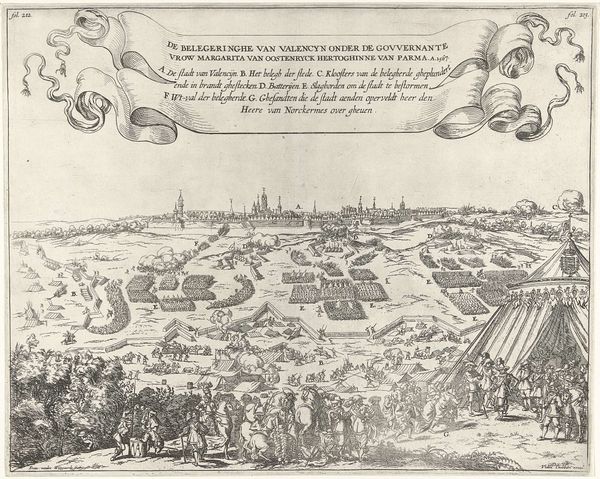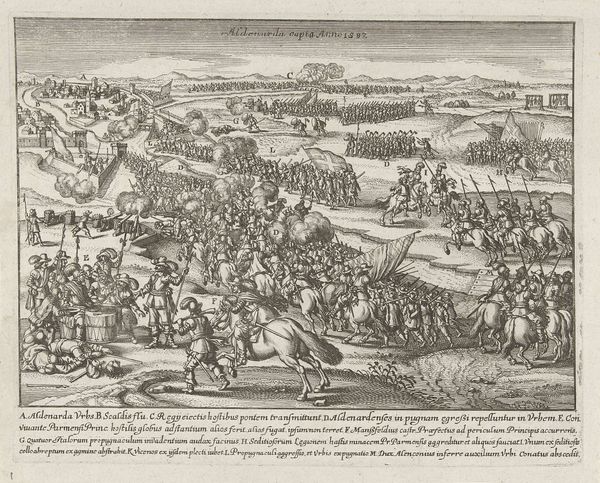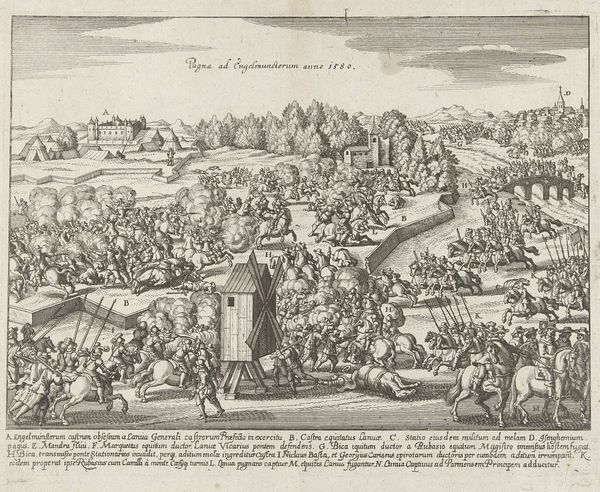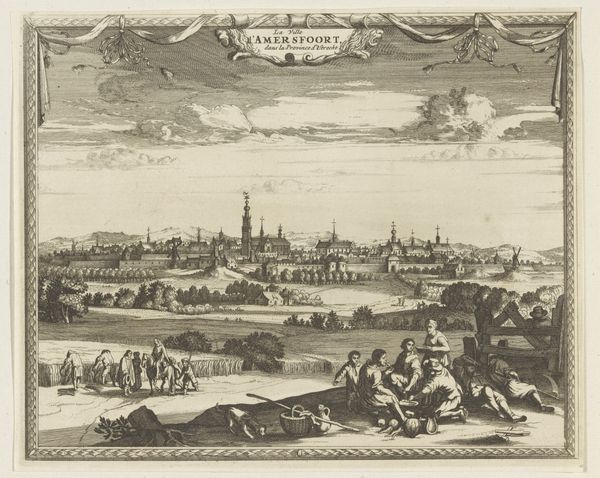
print, engraving
#
baroque
#
dutch-golden-age
# print
#
old engraving style
#
landscape
#
perspective
#
abstraction
#
line
#
cityscape
#
history-painting
#
engraving
#
realism
Dimensions: height 220 mm, width 274 mm
Copyright: Rijks Museum: Open Domain
Editor: Here we have an engraving entitled "Alva belegert Bergen in Henegouwen, 1572," dating from 1649-1651. It's by an anonymous artist and resides in the Rijksmuseum. The image depicts a siege scene, incredibly detailed, yet also somehow abstract due to the printmaking style. What narratives do you see woven into this image? Curator: What I see here is a meticulously crafted piece of propaganda masked as historical record. Look closely at the idealized, almost theatrical arrangement of the battle. Consider how the anonymous artist, likely commissioned, sought to frame the Dutch struggle for independence within a specific, perhaps biased, light. Who are the heroes here? How are the different sides portrayed, and what social or political message is being sent to its intended audience? Editor: It feels very strategic. I'm thinking about how perspective is used. Is that contributing to the narrative? Curator: Precisely. Perspective isn't merely a technical skill; it's a tool of power. By manipulating spatial relationships, the artist directs our gaze, emphasizing certain figures or events over others. Note, too, the textual annotations across the landscape—like embedded subtitles or running commentary. Ask yourself, whose voice are we hearing, and what impact might this perspective have on our understanding of this historical event and its players? Think about this print as participating in a broader debate about national identity and colonial resistance. Editor: So, reading this image isn't just about identifying the historical event but understanding the political arguments being made through its visual language. Curator: Exactly! It’s about understanding how visual culture contributes to the construction of national identity and justifies political actions. By dissecting these images, we gain a better understanding of the complex, often contradictory forces that shape our world. Editor: I'll definitely keep that in mind. Thanks so much!
Comments
No comments
Be the first to comment and join the conversation on the ultimate creative platform.

